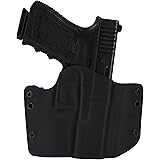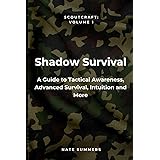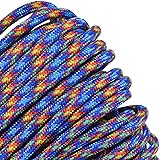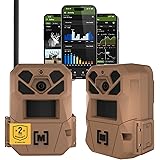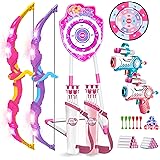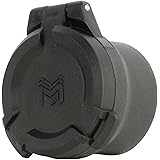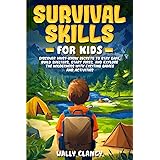This is an electrical problem where the heart’s electrical activity becomes chaotic, causing it to stop pumping blood. Symptoms that may occur minutes before cardiac arrest:
- Ragged or gasping breathing.
- A profound lack of air.
- Sudden, severe chest pain.
- Heart palpitations or a racing heartbeat.
- Darkened or hazy vision.
- Fainting or sudden loss of consciousness.
Cardiac arrest is a medical emergency requiring immediate CPR and defibrillation.
Stroke: Blood supply to part of the brain is interrupted or reduced.
This is a “brain attack” caused by either:
- **Ischemic Stroke:** A blood clot blocks a vessel, preventing blood and oxygen from reaching a part of the brain.
- **Hemorrhagic Stroke:** A blood vessel in the brain bursts, causing bleeding.
- Problems with understanding or speaking; slurred speech, confusion, difficulty finding words.
- Hazy or blurred vision, or sudden loss of vision in one eye.
- Paralysis or weakness on one side of the body, affecting the face, arm, or leg. This is often described as a ‘droop’.
- Sudden, severe vomiting.
- Sudden dizziness, loss of balance, or coordination.
The acronym FAST is often used to recognize stroke: Face drooping, Arm weakness, Speech difficulty, Time to call emergency services. Every second counts for brain tissue survival.
Practical Skills for Enhanced Preparedness
Beyond immediate emergency responses, cultivating practical skills provides an added layer of self-reliance and readiness for various challenges. These are important survival tips for daily life.
12. Mastering Essential Knots
Knowing how to tie a strong and reliable knot is an incredibly useful skill, from securing loads to camping or first aid. Several fundamental knots are highlighted, each a useful survival tip:
- **Straight Knot (Reef Knot):** This knot is commonly used for tying two ends of rope together, especially for non-critical applications like bundling items or securing a bandage.
- **Hunter’s Bend:** A secure and strong knot often used to join two ropes of similar size. It is known for its reliability and resistance to slipping.
- **Fisherman’s Bend (Anchor Bend):** This knot is excellent for attaching a rope to a ring, hook, or anchor. It is highly secure and resistant to heavy loads.
- **Package Knot:** While not a formal knot, this refers to a method of securing a package, often involving a simple cross-over and tightening technique.
- **Textile Knot:** This term is quite broad but generally refers to knots used in fabric or thread, often for decorative or functional purposes in crafts.
- **Grass Knot:** A simple knot, often used with twine or lighter materials, possibly for quick ties in gardening or light utility.
- **Oak Knot:** Also known as an Overhand Knot, it is the simplest of all knots and serves as the foundation for many others. It is often used to prevent fraying or to create a stopper.
Each knot has a specific purpose, and understanding their applications can greatly enhance one’s practical survival tips toolkit.
13. Versatile Bandaging Techniques
Applying bandages correctly is a critical first-aid skill for treating injuries, stopping bleeding, and providing support. Different techniques are suitable for various wounds and body parts, making these vital survival tips for immediate care.
- **Gauze Bandage:** Primarily used for covering wounds to absorb exudate, prevent infection, and apply pressure. It is often secured with tape or a roller bandage.
- **Band-Aid Hack:** This likely refers to creative ways to apply adhesive bandages (like a standard Band-Aid) to difficult areas such as fingertips or joints, often by cutting them to fit better or provide more flexibility. For instance, cutting a Band-Aid lengthwise at both ends can help it contour better around a finger.
- **Arm Sling:** Used to support an injured arm, shoulder, or hand, immobilizing it and reducing pain. It is typically created from a triangular piece of cloth.
- **Elastic Bandaging Techniques:** Elastic bandages are used for compression, support, and immobilization, particularly for sprains, strains, or to reduce swelling. Techniques vary depending on the body part (e.g., figure-eight wrap for ankles, spiral wrap for limbs).
These practical skills are fundamental for providing immediate care and are indispensable survival tips for common injuries.
Heart Attack: Blood doesn’t reach the cardiac muscle.
Symptoms often involve:
- A sensation of heaviness and pain in the chest, which may feel like squeezing, pressure, or fullness. This pain can radiate to other areas.
- Stomach upset or nausea.
- Cold sweat.
- Pain in the upper half of the body, including arms (especially the left), back, neck, jaw, or stomach.
- Breathlessness or coughing.
- Dizziness or lightheadedness.
It is important to note that symptoms might pass, only to reappear later. Immediate medical attention is required.
Cardiac Arrest: The heart suddenly stops beating effectively.
This is an electrical problem where the heart’s electrical activity becomes chaotic, causing it to stop pumping blood. Symptoms that may occur minutes before cardiac arrest:
- Ragged or gasping breathing.
- A profound lack of air.
- Sudden, severe chest pain.
- Heart palpitations or a racing heartbeat.
- Darkened or hazy vision.
- Fainting or sudden loss of consciousness.
Cardiac arrest is a medical emergency requiring immediate CPR and defibrillation.
Stroke: Blood supply to part of the brain is interrupted or reduced.
This is a “brain attack” caused by either:
- **Ischemic Stroke:** A blood clot blocks a vessel, preventing blood and oxygen from reaching a part of the brain.
- **Hemorrhagic Stroke:** A blood vessel in the brain bursts, causing bleeding.
- Problems with understanding or speaking; slurred speech, confusion, difficulty finding words.
- Hazy or blurred vision, or sudden loss of vision in one eye.
- Paralysis or weakness on one side of the body, affecting the face, arm, or leg. This is often described as a ‘droop’.
- Sudden, severe vomiting.
- Sudden dizziness, loss of balance, or coordination.
The acronym FAST is often used to recognize stroke: Face drooping, Arm weakness, Speech difficulty, Time to call emergency services. Every second counts for brain tissue survival.
Practical Skills for Enhanced Preparedness
Beyond immediate emergency responses, cultivating practical skills provides an added layer of self-reliance and readiness for various challenges. These are important survival tips for daily life.
12. Mastering Essential Knots
Knowing how to tie a strong and reliable knot is an incredibly useful skill, from securing loads to camping or first aid. Several fundamental knots are highlighted, each a useful survival tip:
- **Straight Knot (Reef Knot):** This knot is commonly used for tying two ends of rope together, especially for non-critical applications like bundling items or securing a bandage.
- **Hunter’s Bend:** A secure and strong knot often used to join two ropes of similar size. It is known for its reliability and resistance to slipping.
- **Fisherman’s Bend (Anchor Bend):** This knot is excellent for attaching a rope to a ring, hook, or anchor. It is highly secure and resistant to heavy loads.
- **Package Knot:** While not a formal knot, this refers to a method of securing a package, often involving a simple cross-over and tightening technique.
- **Textile Knot:** This term is quite broad but generally refers to knots used in fabric or thread, often for decorative or functional purposes in crafts.
- **Grass Knot:** A simple knot, often used with twine or lighter materials, possibly for quick ties in gardening or light utility.
- **Oak Knot:** Also known as an Overhand Knot, it is the simplest of all knots and serves as the foundation for many others. It is often used to prevent fraying or to create a stopper.
Each knot has a specific purpose, and understanding their applications can greatly enhance one’s practical survival tips toolkit.
13. Versatile Bandaging Techniques
Applying bandages correctly is a critical first-aid skill for treating injuries, stopping bleeding, and providing support. Different techniques are suitable for various wounds and body parts, making these vital survival tips for immediate care.
- **Gauze Bandage:** Primarily used for covering wounds to absorb exudate, prevent infection, and apply pressure. It is often secured with tape or a roller bandage.
- **Band-Aid Hack:** This likely refers to creative ways to apply adhesive bandages (like a standard Band-Aid) to difficult areas such as fingertips or joints, often by cutting them to fit better or provide more flexibility. For instance, cutting a Band-Aid lengthwise at both ends can help it contour better around a finger.
- **Arm Sling:** Used to support an injured arm, shoulder, or hand, immobilizing it and reducing pain. It is typically created from a triangular piece of cloth.
- **Elastic Bandaging Techniques:** Elastic bandages are used for compression, support, and immobilization, particularly for sprains, strains, or to reduce swelling. Techniques vary depending on the body part (e.g., figure-eight wrap for ankles, spiral wrap for limbs).
These practical skills are fundamental for providing immediate care and are indispensable survival tips for common injuries.
Crucial Life-Saving Skills: Essential Survival Tips for Everyday Emergencies
Have you ever considered how quickly a normal day can turn into an unexpected emergency? Or questioned if you would know what to do when faced with a critical situation? The video above provides a concise overview of several important survival tips, touching upon everything from cold-weather dangers to vehicle mishaps and vital first-aid recognition. In this guide, these life-saving skills will be explored in greater depth, ensuring that comprehensive knowledge is gained for various unexpected scenarios.
Navigating Perilous Situations: Mastering Cold Weather & Water Emergencies
When unexpected dangers arise, a clear mind and prepared actions are paramount. Understanding how to react in cold environments or water-related incidents can dramatically increase the likelihood of a positive outcome.
1. Responding to a Fall Through Ice
Falling through ice is a terrifying prospect, but specific actions can greatly aid self-rescue. It is often stated that approximately 10 minutes are available until muscles begin to seize up from the cold, making swift, decisive action essential for these crucial survival tips.
- **Control Your Breathing:** Panic is a natural reaction, but it is crucial that breathing is controlled. Rapid, shallow breaths can lead to hyperventilation, exacerbating the situation. Deep, controlled breaths are recommended for maintaining composure.
- **Retain Your Clothing:** The air trapped within clothing is often overlooked, but it is vital for buoyancy. Removing clothes will cause a quicker loss of body heat and reduce the ability to stay afloat.
- **Utilize Your Entry Point:** The path along which one entered the water is usually the strongest point of the ice sheet. It is generally advised that an attempt be made to climb out from this same direction.
- **Spread Your Weight:** Once an attempt is made to get onto the ice, it is important that weight is distributed as widely as possible. Both arms should be placed on a hard part of the ice, and the torso should be stretched out, leaning on elbows and palms. This reduces the pressure on any single point, preventing further breakage.
- **Crawl or Roll to Safety:** After successfully getting onto the ice, crawling or rolling is the recommended method for reaching solid ground. This wide distribution of weight minimizes the risk of breaking through again.
Upon reaching the shore, immediate action is required to find a warm, dry place. Hypothermia is a serious risk, and warming up promptly is vital for recovery. The importance of staying away from thin ice cannot be overstated; awareness of ice conditions is a fundamental survival tip.
2. The Truth About Warming Up Your Car in Cold Weather
It is commonly believed by many drivers that idling a car engine in cold weather prolongs its service life. However, this is a misconception that can actually lead to engine damage. The primary function of warming up a car engine, especially older models, was to allow engine oil to circulate and reach optimal operating temperature. Modern vehicles, however, are designed differently, making this a relevant car maintenance survival tip.
Modern engines operate on a finely tuned mixture of air and vaporized fuel. When an engine idles, it heats up much more slowly than when driven gently. During this slow warm-up, the cylinders can be flooded with an overly rich fuel mixture, which acts as a solvent, stripping away the essential oil film from the cylinder walls. This “fuel wash” can cause increased wear on critical engine components, potentially shortening engine life over time.
The best approach for heating a car is to wait for a minute or two after starting the engine, allowing essential fluids to circulate. After this brief period, driving forward slowly and gently is advised. The engine will reach its optimal operating temperature more efficiently under a light load, and proper lubrication will be maintained.
3. Safe and Correct Jump-Starting Procedures
A dead car battery is a common inconvenience, but knowing how to jump-start a vehicle correctly is a crucial emergency preparedness skill. Incorrect procedures can lead to serious injury or damage to electrical systems, highlighting the need for these crucial survival tips.
Imagine if your car’s battery died in a remote area, and help arrived. Knowing these steps could make all the difference:
- **Preparation:** Ensure both vehicles are switched off, and all devices (lights, radio, AC) in both cars are turned off. This prevents electrical surges and ensures safety.
- **Identify Terminals:** Locate the batteries in both vehicles. The positive terminal is marked with a ‘+’ and is usually red, while the negative terminal is marked with a ‘-‘ and is typically black.
- **Initial Patient Battery Connection:** The negative cable from the patient’s (dead battery) needs to be disconnected first. This is a critical safety step to prevent sparks. Then, the red positive (+) jump lead is connected to the positive terminal of the patient’s battery.
- **Donor Battery Connection:** The other end of the red positive (+) jump lead is then connected to the positive terminal of the donor’s (working battery) battery.
- **Donor Negative Connection:** The black negative (-) jump lead is connected to the negative terminal of the donor’s battery.
- **Grounding the Patient:** Crucially, the other end of the black negative (-) jump lead is connected to any unpainted, metallic part of the patient’s car engine block, away from the battery itself and moving parts. This provides a ground connection and helps prevent sparks near the battery, where explosive hydrogen gas can accumulate.
- **Start the Donor:** The engine of the donor vehicle is started and allowed to run for a few minutes to charge the patient’s battery.
- **Start the Patient:** After a few minutes, an attempt can be made to start the patient’s engine.
- **Reconnecting Patient Battery and Disconnecting Leads:** Once the patient’s engine is running, the negative cable of the patient’s battery is reconnected to the accumulator. Then, the jump leads are disconnected in the reverse order of connection: first the negative from the patient’s ground point, then the negative from the donor, then the positive from the donor, and finally the positive from the patient.
An important reminder is that the patient’s accumulator (battery) needs to recharge. It is advised that the car is not turned off immediately after a jump-start but is driven for a sustained period to allow the alternator to replenish the battery’s charge.
4. Escaping from a Sinking Car
The scenario of a car sinking into water is extremely frightening, yet knowing the proper escape techniques can be life-saving. Every second counts in such an emergency, making this a vital vehicle safety survival tip.
- **Immediate Action:** As soon as the car hits the water, the first priority is to unfasten the seatbelt and immediately open a window. It is generally recommended that the window is climbed out of before the car is significantly submerged.
- **Avoid Doors:** Attempting to open the car doors is generally futile in the initial moments. The external water pressure will make it nearly impossible to open them until the cabin is completely filled with water.
- **Breaking a Window:** If the window cannot be opened, it must be broken. The corners of the window glass are typically the weakest points and should be targeted using a specialized car escape tool, a heavy object, or even a foot if necessary.
- **Prioritize Children:** If children are present, they should be pushed out of the window ahead of the adults.
- **Final Resort – Waiting:** If escape through the window is not possible, a difficult but sometimes necessary measure is to wait for the car to completely fill with water. Once the cabin is full and the water pressure equalized, the doors can then be opened. Bubbles will indicate the direction of the surface.
Self-preservation is paramount. Looking after oneself and others in such a high-stress environment requires quick thinking and adherence to these critical survival tips.
Optimizing Vehicle Control & Personal Safety: Everyday Readiness
Beyond immediate emergency responses, subtle adjustments to daily habits and awareness of surroundings can significantly enhance personal safety and vehicle control, showcasing the breadth of essential survival tips.
5. The Correct Way to Sit at the Wheel
While often overlooked, the correct seating position at the wheel is not just about comfort; it is a fundamental aspect of driving safety and an essential survival tip for road users. In dangerous situations, a proper posture can dramatically improve reaction time and control.
- **Back Against the Seat:** The back should be pressed firmly against the seat. This provides stability and prevents slouching, which can impede quick movements.
- **Leg Position:** When pressing on the clutch pedal or brakes, the legs should be almost straight, with a slight bend. This allows for full pedal depression without overextending and provides optimal leverage.
- **Head Position:** The head should be almost vertical, centered, and aligned with the spine, ensuring a clear view and reducing neck strain.
- **Arm & Steering Wheel Position:** When the arms are extended, the wrists should rest on the steering wheel, specifically at the “10 and 2 o’clock” positions, or the “9 and 3 o’clock” positions for cars with airbags, which is the preferred modern recommendation. This ensures that the arms have a slight bend, allowing for full range of motion without locking the elbows. It also ensures that hands can freely use the gear stick and other controls without having to adjust the body.
- **Mirror & Dashboard Visibility:** The steering wheel should be adjusted so it does not obscure the dashboard, and all mirrors should be within the driver’s field of view with minimal head movement.
A properly adjusted driving position can be a literal life-saver, enabling quicker, more effective responses to sudden hazards.
6. What to Do If Attacked by a Dog
Encounters with aggressive dogs can be intimidating. Knowing how to react calmly and defensively is a key personal safety survival tip.
Imagine if you were walking and an unfamiliar dog started showing aggressive behavior:
- **Slow Down and Stay Calm:** Sudden movements can provoke an animal. A slow, deliberate approach is often more effective. Remaining calm helps prevent the dog from sensing fear, which can sometimes escalate aggression.
- **Avoid Eye Contact:** Direct eye contact can be perceived as a challenge by a dog. It is advised that eye contact is avoided.
- **Utilize Available Defenses:** Any available item can be used as a barrier or a distraction: a coat, hat, umbrella, backpack, or even keys thrown a short distance away. These items can be placed between you and the dog or used to create noise to deter it.
- **Command the Animal:** A firm, clear command like ‘Stay back!’ or ‘No!’ can sometimes be effective, especially if the dog has some training.
- **Vacate the Area:** Without making sudden movements or turning your back to run (which can trigger a chase response), slowly and carefully vacate the area, creating distance from the animal.
Understanding animal behavior and reacting appropriately can prevent a potentially dangerous situation from escalating.
7. Surviving a Falling Elevator
The thought of being in a falling elevator is a common fear, though the likelihood of such an event is incredibly small—statistically, it is 1 in 0.00000015%. Nevertheless, being prepared for even the most remote possibilities is a hallmark of comprehensive emergency preparedness, making these specific survival tips valuable.
If such an improbable event were to occur, specific actions are recommended:
- **Lie Flat on Your Back:** The most recommended position is to lie flat on your back, stretching out as much as the elevator car allows. This distributes the impact force over the largest possible area of the body.
- **Protect Your Head and Face:** One arm should be placed underneath the head to cushion the blow, while the other arm should be placed over the face to protect it from falling debris or shattered lights.
- **Avoid Jumping or Bending Knees:** It is advised that an attempt to jump at the moment of impact is not made, as timing this perfectly is nearly impossible and could cause greater injury. Similarly, standing with legs half-bent is not recommended, as this can concentrate impact forces on the legs and spine.
While extremely rare, awareness of these survival tips ensures readiness for even the most unlikely scenarios.
8. Finding Water in the Desert
Survival in a desert environment hinges on finding water. Knowledge of natural indicators and basic collection methods can be the difference between life and death. This is a critical outdoor survival tip.
Consider being stranded in an arid landscape:
- **Biotic Indicators:** The presence of specific plants and insects often signifies proximity to water. Water can also be found within the stems and roots of certain desert plants. For instance, cacti can store significant amounts of water.
- **Avian Clues:** Observing birds flying in a consistent direction, especially early morning or late evening, often indicates a flight path to a water source. Predator birds might also circle areas where prey gather near water.
- **Geographical Features:** Hollows, canyons, and caves at the base of mountains are natural collection points for rainwater and can often conceal underground springs or water pockets.
- **Ground Indicators:** Moist earth, lush plants in an otherwise dry area, and dry riverbeds (which may have water beneath the surface) are all strong signs. Digging a shallow hole in these areas might cause water to gather.
- **Dew Collection:** A simple yet effective method is to hang any piece of material on a stick or bush before sunrise. The material will collect dew, which can then be squeezed out and consumed.
While filtering collected water is always best for health, in extreme survival situations, even dirty water can be life-saving. The priority is hydration, one of the most fundamental survival tips.
Critical Responses to Natural Disasters & Medical Crises
Being prepared for severe natural phenomena and recognizing medical emergencies are foundational aspects of comprehensive emergency preparedness. These survival tips focus on protecting oneself and others during high-stakes events.
9. Staying Safe During a Storm
Lightning is a formidable and real threat to life during a storm. Knowing how to protect oneself is crucial, making these essential survival tips for storm safety invaluable.
- **Avoid Ordinary Telephones and Water Pipes:** During a lightning storm, it is advised that ordinary corded telephones are not used, nor should water pipes be touched. Lightning can travel through metal wires and plumbing. Mobile phones are generally safe indoors.
- **Seek Appropriate Shelter:** Hiding under trees is extremely dangerous, as trees are often struck by lightning and can fall or splinter. Similarly, riding a bike or motorcycle in a storm increases vulnerability. The safest places are sturdy, enclosed buildings or an enclosed metal vehicle (like a car), where the Faraday cage effect can protect occupants.
- **Understanding Lightning Behavior:** It is a myth that lightning never strikes the same place twice; it absolutely can. Furthermore, lightning frequently strikes rivers and lakes, making water activities incredibly hazardous during a storm.
Adherence to these guidelines significantly reduces the risk of being struck by lightning, an important survival tip for storms.
10. Assisting a Drowning Person
Recognizing the signs of drowning and knowing how to safely assist someone is a profound life-saving skill. It is paramount to remember that a drowning person may panic and inadvertently endanger a rescuer, underscoring the importance of these survival tips for water safety.
Recognizing Drowning Signs:
It is often not the dramatic splashing seen in movies. A person may be drowning if:
- Their head is thrown back, often submerging and re-emerging from the water.
- Their mouth is open, struggling to take in air, and repeatedly goes under and emerges.
- Their eyes are focused on one point or are closed, showing a glazed or blank stare.
- Their arms are stretched out to their sides, often pressing down on the water surface.
- Their body is upright in the water, but their legs are not actively moving or kicking.
How to Safely Drag a Drowning Person to Shore:
Safety for the rescuer is prioritized. Only good swimmers who feel well should attempt a water rescue alone.
- **Approach from Behind:** To prevent the drowning person from grabbing onto you in panic and pulling you under, it is crucial that they are approached from behind.
- **Underwater Approach (if fully submerged):** If the person is completely underwater, approaching them from the bottom of the pool or body of water is often safer.
- **Secure Hold:** Once within reach, a firm grip should be secured under their armpits, by their arms, or by their hair. The goal is to pull them out of the water quickly.
- **Lift from the Bottom:** It is often crucial that a hard pull upwards from the bottom is executed to get their head above water and begin moving them.
- **Rapid Shore Return:** The drowning person should be brought to the shore as fast as possible. Once on stable ground, immediate assessment of their condition and calling for emergency services (ambulance) is necessary. If needed, CPR should be initiated if the rescuer is trained.
Remembering that “Ambulance, it’s urgent!” is the immediate call after safely reaching the shore with a distressed individual. These are invaluable survival tips for water safety.
11. Differentiating Between Heart Attack, Cardiac Arrest, and Stroke
In critical medical emergencies, quickly distinguishing between these conditions can mean the difference between life and death. Recognizing symptoms is a vital first-aid survival tip.
Heart Attack: Blood doesn’t reach the cardiac muscle.
Symptoms often involve:
- A sensation of heaviness and pain in the chest, which may feel like squeezing, pressure, or fullness. This pain can radiate to other areas.
- Stomach upset or nausea.
- Cold sweat.
- Pain in the upper half of the body, including arms (especially the left), back, neck, jaw, or stomach.
- Breathlessness or coughing.
- Dizziness or lightheadedness.
It is important to note that symptoms might pass, only to reappear later. Immediate medical attention is required.
Cardiac Arrest: The heart suddenly stops beating effectively.
This is an electrical problem where the heart’s electrical activity becomes chaotic, causing it to stop pumping blood. Symptoms that may occur minutes before cardiac arrest:
- Ragged or gasping breathing.
- A profound lack of air.
- Sudden, severe chest pain.
- Heart palpitations or a racing heartbeat.
- Darkened or hazy vision.
- Fainting or sudden loss of consciousness.
Cardiac arrest is a medical emergency requiring immediate CPR and defibrillation.
Stroke: Blood supply to part of the brain is interrupted or reduced.
This is a “brain attack” caused by either:
- **Ischemic Stroke:** A blood clot blocks a vessel, preventing blood and oxygen from reaching a part of the brain.
- **Hemorrhagic Stroke:** A blood vessel in the brain bursts, causing bleeding.
- Problems with understanding or speaking; slurred speech, confusion, difficulty finding words.
- Hazy or blurred vision, or sudden loss of vision in one eye.
- Paralysis or weakness on one side of the body, affecting the face, arm, or leg. This is often described as a ‘droop’.
- Sudden, severe vomiting.
- Sudden dizziness, loss of balance, or coordination.
The acronym FAST is often used to recognize stroke: Face drooping, Arm weakness, Speech difficulty, Time to call emergency services. Every second counts for brain tissue survival.
Practical Skills for Enhanced Preparedness
Beyond immediate emergency responses, cultivating practical skills provides an added layer of self-reliance and readiness for various challenges. These are important survival tips for daily life.
12. Mastering Essential Knots
Knowing how to tie a strong and reliable knot is an incredibly useful skill, from securing loads to camping or first aid. Several fundamental knots are highlighted, each a useful survival tip:
- **Straight Knot (Reef Knot):** This knot is commonly used for tying two ends of rope together, especially for non-critical applications like bundling items or securing a bandage.
- **Hunter’s Bend:** A secure and strong knot often used to join two ropes of similar size. It is known for its reliability and resistance to slipping.
- **Fisherman’s Bend (Anchor Bend):** This knot is excellent for attaching a rope to a ring, hook, or anchor. It is highly secure and resistant to heavy loads.
- **Package Knot:** While not a formal knot, this refers to a method of securing a package, often involving a simple cross-over and tightening technique.
- **Textile Knot:** This term is quite broad but generally refers to knots used in fabric or thread, often for decorative or functional purposes in crafts.
- **Grass Knot:** A simple knot, often used with twine or lighter materials, possibly for quick ties in gardening or light utility.
- **Oak Knot:** Also known as an Overhand Knot, it is the simplest of all knots and serves as the foundation for many others. It is often used to prevent fraying or to create a stopper.
Each knot has a specific purpose, and understanding their applications can greatly enhance one’s practical survival tips toolkit.
13. Versatile Bandaging Techniques
Applying bandages correctly is a critical first-aid skill for treating injuries, stopping bleeding, and providing support. Different techniques are suitable for various wounds and body parts, making these vital survival tips for immediate care.
- **Gauze Bandage:** Primarily used for covering wounds to absorb exudate, prevent infection, and apply pressure. It is often secured with tape or a roller bandage.
- **Band-Aid Hack:** This likely refers to creative ways to apply adhesive bandages (like a standard Band-Aid) to difficult areas such as fingertips or joints, often by cutting them to fit better or provide more flexibility. For instance, cutting a Band-Aid lengthwise at both ends can help it contour better around a finger.
- **Arm Sling:** Used to support an injured arm, shoulder, or hand, immobilizing it and reducing pain. It is typically created from a triangular piece of cloth.
- **Elastic Bandaging Techniques:** Elastic bandages are used for compression, support, and immobilization, particularly for sprains, strains, or to reduce swelling. Techniques vary depending on the body part (e.g., figure-eight wrap for ankles, spiral wrap for limbs).
These practical skills are fundamental for providing immediate care and are indispensable survival tips for common injuries.




